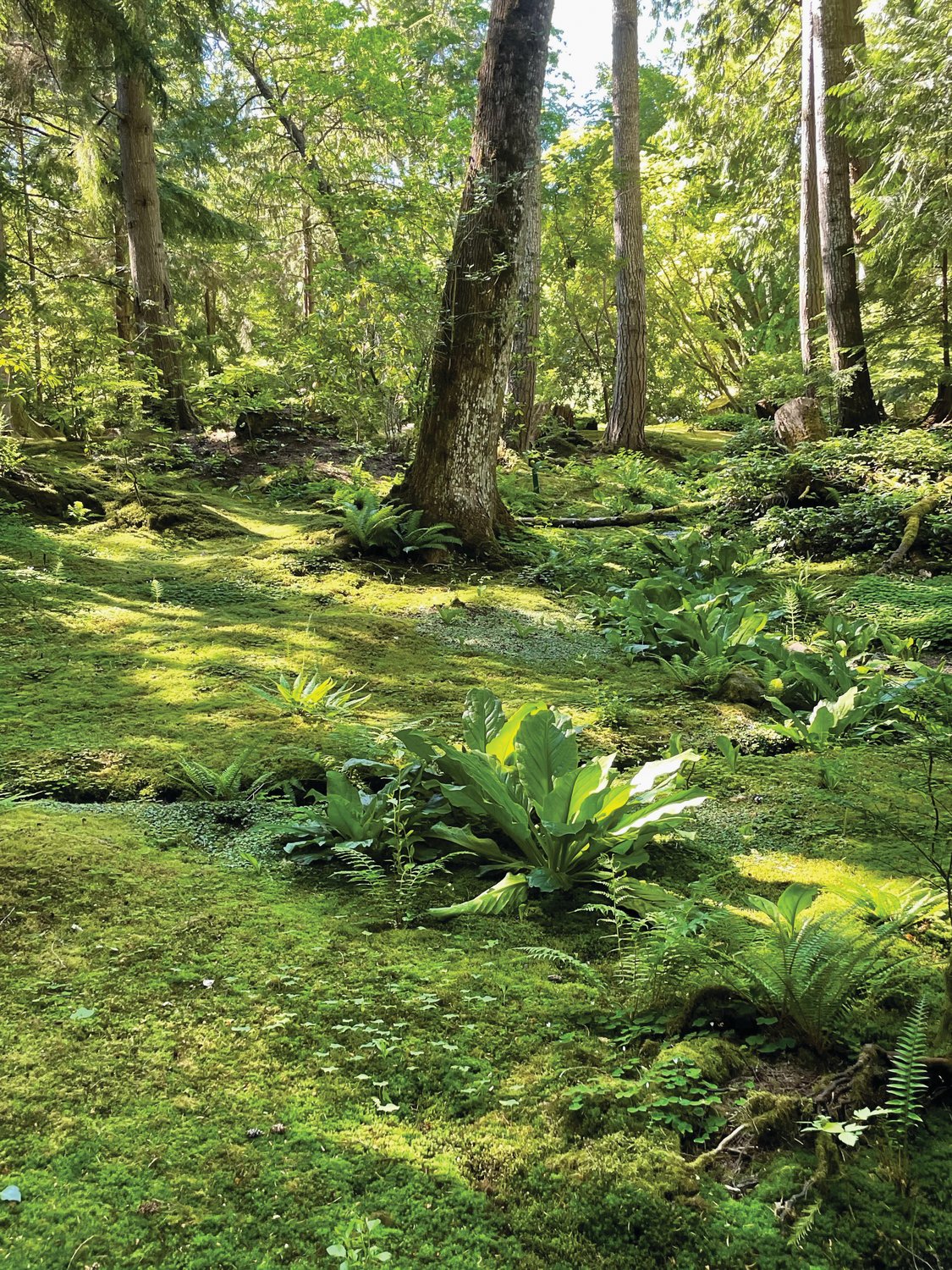Mosses are among the oldest plants on earth, originating more than 400 million years ago.
These tiny, elfin mosses play an outsize role in diverse habitats around the world.
…
This item is available in full to subscribers.
We have recently launched a new and improved website. To continue reading, you will need to either log into your subscriber account, or purchase a new subscription.
If you had an active account on our previous website, then you have an account here. Simply reset your password to regain access to your account.
If you did not have an account on our previous website, but are a current print subscriber, click here to set up your website account.
Otherwise, click here to view your options for subscribing.
* Having trouble? Call our circulation department at 360-385-2900, or email our support.
Please log in to continue |
|

Mosses are among the oldest plants on earth, originating more than 400 million years ago.
These tiny, elfin mosses play an outsize role in diverse habitats around the world.
Salamanders, frogs, beneficial insects, water bears or “moss piglets,” and other microorganisms live in moss colonies. Birds forage for insects and harvest fragments to build nests. As moss grows on decaying logs, it offers a hospitable place for seeds to germinate.
Moss obtains nutrients from the air, actually cleaning the air as it absorbs nitrates and ammonia. It helps conserve water, improve soil, sequester carbon, control erosion, and filter contaminants from run-off. Mosses are opportunistic, not parasitic, and will not harm healthy trees, shrubs, or other plants.
Moss Basics. Within the plant kingdom, moss is classified as a bryophyte, with more than 12,000 species identified worldwide. The Pacific Northwest Coast has about 700 species, with many types native to all parts of the U.S.
Mosses lack a vascular system, so they absorb nutrients through cell-to-cell transfer. Tiny leaves of most species are just one cell thick. Without true roots, they grow on top of the soil and attach to substrates by rhizoids.
Mosses are often found in moist, shady environments, but they grow in a wide range of ecosystems, from arctic niches to deserts to tropical forests. These adaptable, resilient plants are drought- and cold-tolerant. They can shrivel to conserve water, then recover to a lush green just minutes after water returns.
Gardening with Moss. Mosses bring vibrant colors, interesting textures, and enchanting details to the home garden.
“I love the primeval feel that moss brings,” shares Darren Strenge, horticulturist and moss garden specialist at Bloedel Reserve on Bainbridge Island. A moss garden offers a peaceful place to slow down, enjoy the small, “fairy tale” details, and be inspired.
“Moss is easy to grow,” adds Darren. “Create a situation where moss wants to grow. Let Mother Nature decide,” depending on the conditions in your garden.
Some of the 40 to 50 species at Bloedel that grow well in our region include bent-leaf moss (which likes sun and is often found in lawns), Selwyn’s or gray smoothcap moss (which thrives in shade and mineral soils), and Menzies’ tree moss (growing in moist lowland forests).
It’s good to keep debris and weeds away, and provide water as needed. Darren mentions that moss grows slowly, noting that “there are no impatient moss gardeners.”
Moss also has a special place in Japanese garden traditions. Moss “invites itself” to gardens, transported by wind currents, rain, or birds. It helps absorb sound, and captures and releases water while fostering a sense of serenity and harmony.
Plant moss in pocket-sized spaces between stepping stones, in rock gardens, or in containers. Or use it as a ground cover or low-maintenance, walkable alternative to a monoculture lawn. A moss lawn, or a lawn that blends mosses with wildflowers, herbs, and grasses, will require minimal mowing, less water, and no fertilizer, pesticides, or herbicides.
A good way to begin cultivating moss is to harvest fragments from colonies that are already on site and transfer them to a similar microclimate. You can also harvest moss from a friend’s property, rescue it (with permission) from a development site, or purchase from a certified moss nursery.
Place the moss with its rhizoids directly on hard-packed, acidic soil, nutrient-poor soil, or a hard surface. As with other new plantings, watering is key. Gently walking on it with flat shoes helps the rhizoids attach to their new home.
Moss Myths. A popular method of propagating moss is to make a slurry in a blender with water, buttermilk, beer, yogurt or other agents, then paint the mixture on a planting surface. It might be worth a try, but there is little evidence supporting this method. The slurry can be washed away with the rain, dried out in the sun, or eaten by pets or wildlife.
Mosses growing on rooftops may be doing us a hydrologic favor, according to studies at WSU, OSU, and the University of Idaho. Mosses coat hard surfaces with an organic “sponge” that soaks up water and provides hydro-buffering, reducing peak run-off. The researchers add, “the myth that mosses on rooftops cause them to leak is overblown — they do not pry apart shingles. Unlike most other plants, they do not have true roots — but if higher plants take root in the moss mats, then the integrity of the roof can be compromised.”
In addition to Bloedel Reserve, you can visit interesting moss habitats in the Seattle Japanese Garden at the Washington Park Arboretum and the Hall of Mosses Trail (closed for maintenance June 9-16) in the Hoh River Rainforest area of Olympic National Park.
Master Gardeners at the online Plant Clinic host weekly live Zoom sessions from 12:30 a.m. to 2:30 p.m.
Mondays. To make an online appointment or submit a written question, visit http://jefferson.wsu.edu/plant-clinic.
(Barbara Faurot is a Jefferson County Master Gardener and Master Pruner, working with other volunteers who serve as community educators in gardening and environmental stewardship.)